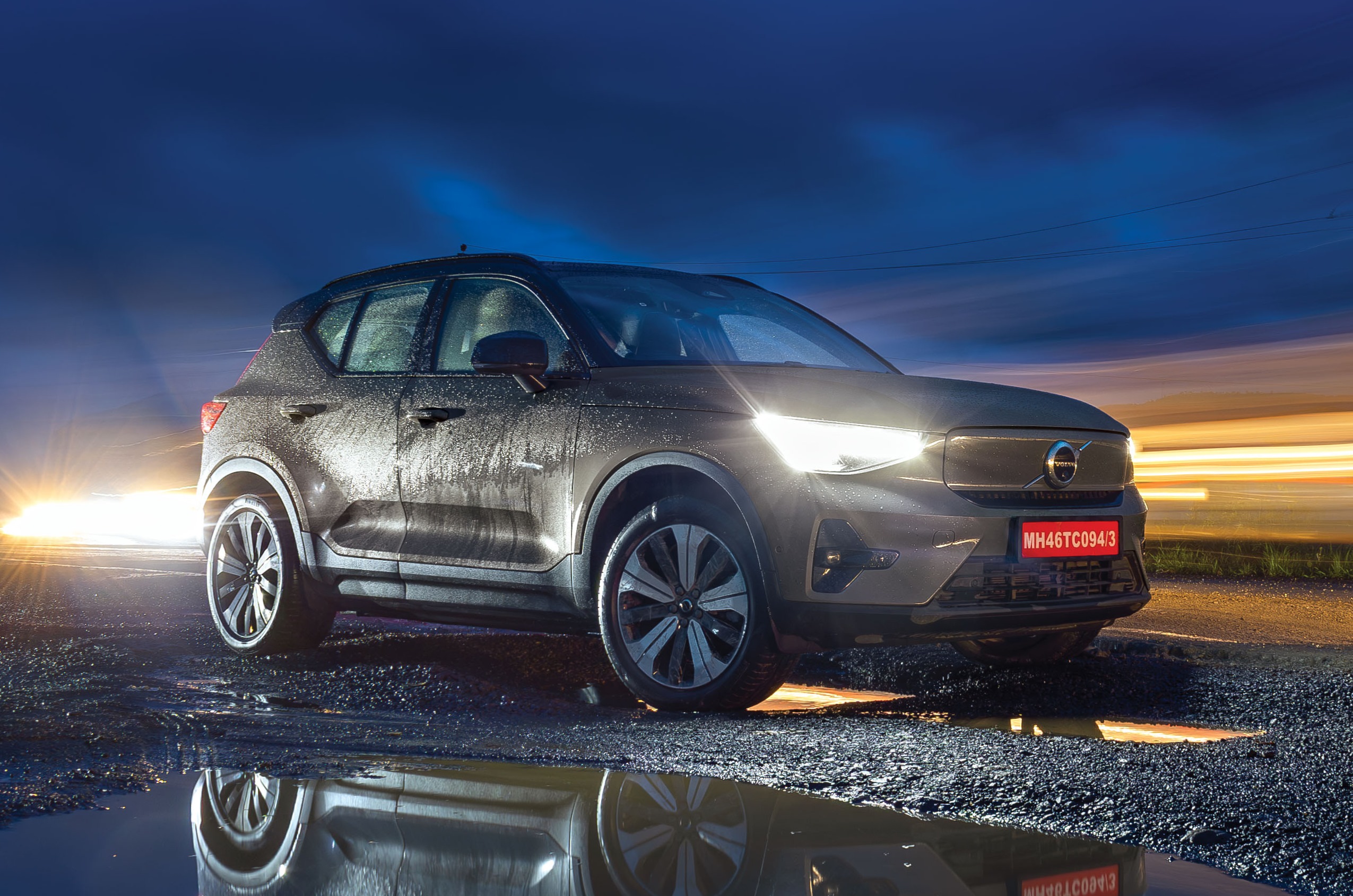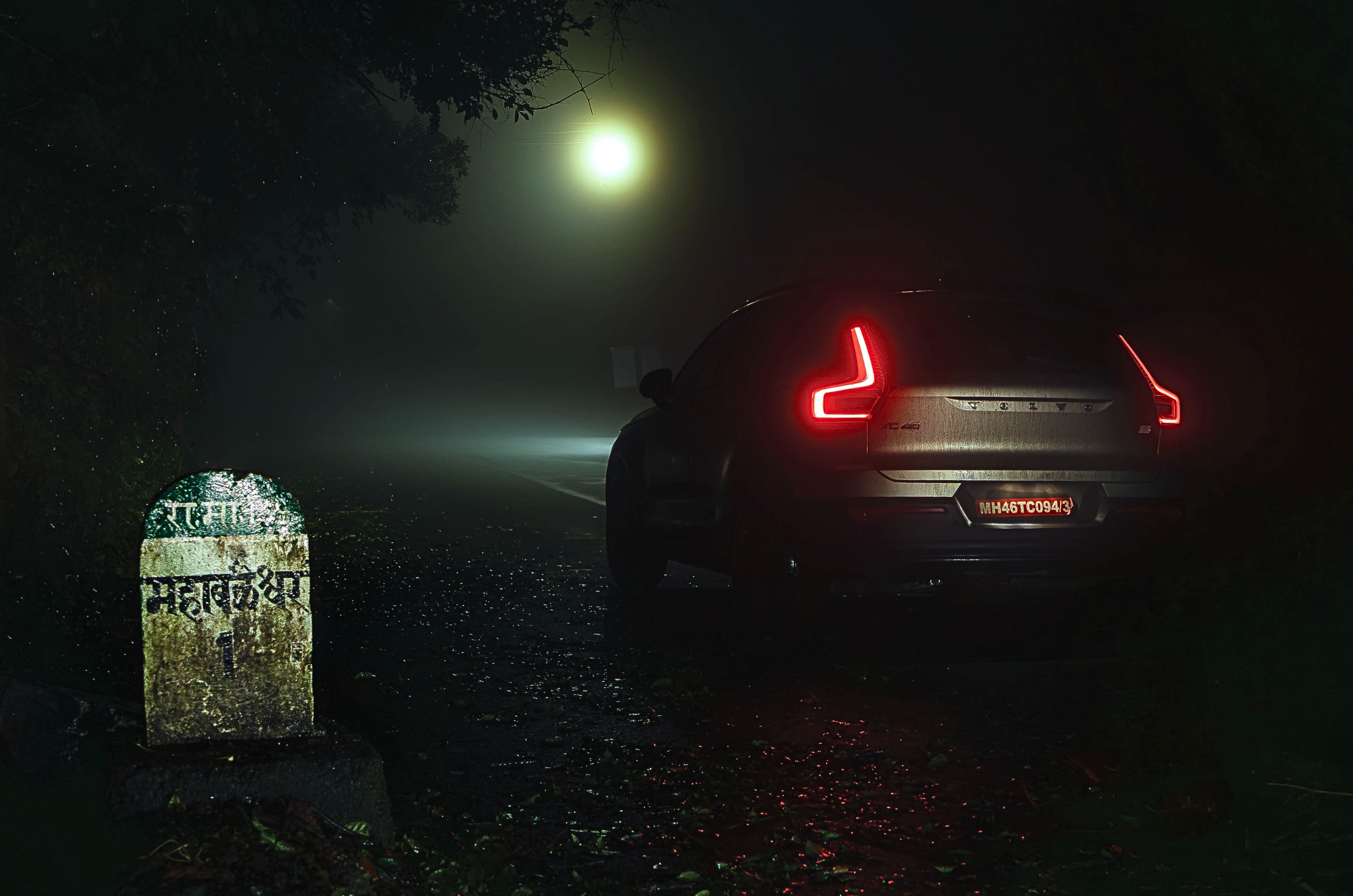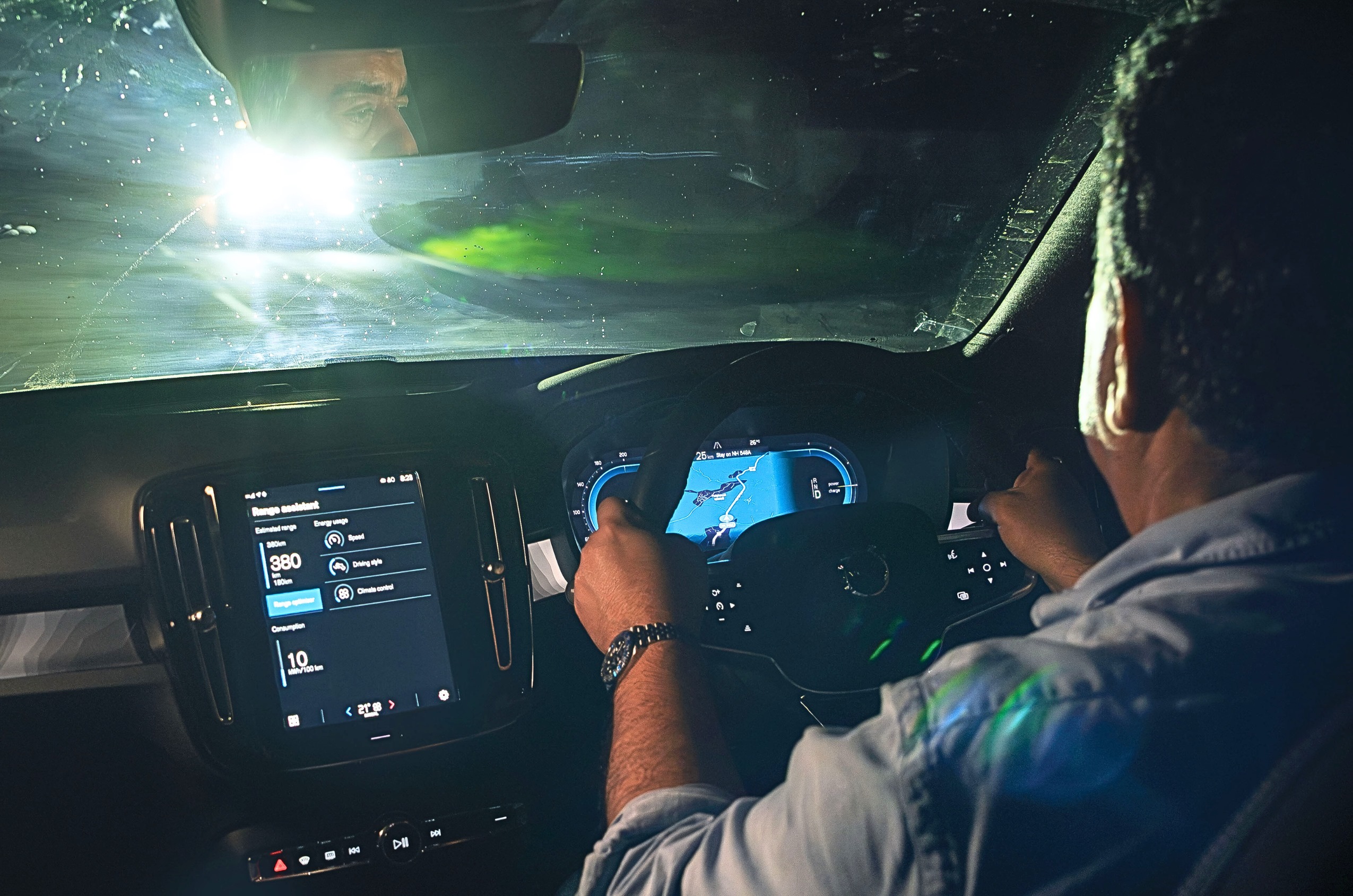Some might call it madness, while others might say it is borderline suicidal. Indian roads, notorious for claiming 19 lives every hour, are dangerous enough. So why would I want them to be even more perilous for this road trip? The answer lies in proving two critical points. First, the most crucial safety factor is the driver. Second, the car acts as your cocoon, a safety bubble. How safe both the car and the driver are is what ultimately keeps you alive.
So, just how much more dangerous can Indian roads get? That’s what I set out to discover on a drive to Mahabaleshwar via NH66 or the old Goa road. This highway is treacherous at best due to its unfinished state. Left in limbo for over a decade, the NH66 can be a death trap. A super-smooth surface that lulls you into a false sense of security and suddenly gives way to an unfinished dirt road. Three lanes merge into two, then into one, often without any warning. The worst part is when vehicles come unexpectedly from the opposite direction, as some drive on the wrong side, making driving in the fast lane especially hazardous.

Add lashing rain and potholes that make the moon’s surface look smooth – during the night at that – and the conditions couldn’t be worse. In fact, the risk element goes up further when you factor in low visibility on winding ghat roads enveloped with mist and fog. Now, imagine doing this in an EV, where, for the last crucial 40km of the lonely climb, there isn’t a single charging station around.
My wife wasn’t thrilled when I told her about this plan. To calm her down, I promised to undertake this drive from hell in a car that was as safe as possible. And it doesn’t get any safer than a Volvo. The XC40 Recharge, topped up to 100 percent, was ready for the job.
The plan was to leave the Autocar India office just after work for the 240km drive to Mahabaleshwar. It doesn’t seem a lot, but on a dark NH66 booby-trapped with potholes, that’s 240km of intense concentration and stress.
PREPARING FOR BATTLE
Prepping a car for any road trip is vital to make the drive safe and less stressful. Checking tyre pressure is crucial, especially before a long drive. Setting the pressure to the highway specification, which is higher than the usual setting, helps stiffen the vulnerable sidewalls. The added stiffness reduces the risk of impact damage or a blowout if you hit a pothole. Higher tyre pressures also reduce rolling resistance, and that’s a benefit when you’re driving an EV and want to squeeze out the maximum range.
You don’t want to compromise on visibility when driving in rain and fog at night, so it’s vital to keep the windscreen as clear as possible. It’s instinctive to use your fist to rub down the windscreen, but that’s the worst thing to do as greasy hands leave a pattern of smudges that turn oncoming lights into a dazzling display of abstract (and opaque) art across your windscreen. What you want is unimpeded visibility. For that, it is best to use a clean microfibre cloth that nicely wipes off grime and dirt. In the rain, use the defogger setting on your aircon, which can effectively clear up patches of condensation on your windscreen. Another tip to keeping your windscreen fog-free is to always use the aircon, even if it’s cool outside. The air-conditioning system prevents condensation by acting as a dehumidifier and keeping the cabin temperature closer to the outside.
And in the rain, you tend to guzzle the wiper-washer fluid at a rapid rate, so it’s always a good idea to top up the reservoir before setting off.
Getting your seating position right is also crucial because a comfy setup keeps you alert and reduces fatigue. The golden rule I swear by is positioning my seat forward just enough so my legs have a natural bend at the knees and I can comfortably reach the 12 o’clock position on the steering wheel without lifting my shoulder off the seat.
As someone on the shorter side, I always crank up the seat height. Again, the rule is to set it high enough – ideally with your eyes halfway up the windscreen – to get a clear view over the dashboard and yet be able to easily read all the instruments.
An added bonus is that the Volvo XC40 Recharge’s seats are exceptionally comfortable and not overly firm or soft. The driver’s seat, with its multiple adjustments, evenly distributes my weight without any pressure points.
IN THE THICK OF IT
It’s 5.30pm by the time I leave on a gloomy Friday evening. It’s the thick of rush hour traffic, but I don’t really feel it because the AtalSetu, which is just 10 minutes away, has pulled the edge of Mumbai closer to our office than we could have ever imagined. I am cruising on the 21km bridge linking Mumbai to Navi Mumbai in no time, and even though I’ve driven on this sea link frequently, it never fails to amaze me. This marvellous piece of infrastructure is the most enjoyable piece of any drive out of Mumbai, and it calmed me in preparation for the turmoil on the other side.
The AtalSetu is the perfect stretch to really experience the XC40 Recharge’s ADAS features. As I set the Adaptive Cruise Control to the 100kph limit, the system automatically adjusted the speed to maintain a safe distance from the car ahead. And on the AtalSetu’s gentle curves, engaging the Lane Keeping Assist function steered the car subtly to stay centred in the lane. Knowing that the car offered an extra set of eyes on the road allowed me to safely steal a few glances at the stunning Mumbai harbour views.
You need more eyes once you hit the JNPT road that links the Atal Setu to the Mumbai-Pune expressway. It’s absolute mayhem, with cars, bikes and trucks of all sizes dodging potholes on disintegrated sections of the road. The proximity-sensor alarms go ballistic with vehicles centimetres away from you, and the blind-spot monitoring light, too, flashes away on this road, where overtaking from the left is a right.
Potholes are the hidden villains of NH66. You’re cruising along on freshly laid concrete sections, and then – bam – a pothole minefield appears out of nowhere. At that pace, there’s no chance to slow down, and before you know it, you’ve hit one hard and blown out a tyre. It’s instinctive to slam on the brakes, but hitting a pothole under hard braking is actually the worst thing to do. When you brake hard, the nose dips, putting more weight on the front tyres and using up all the suspension travel. So, the impact is way more intense, which makes a blowout or serious damage almost inevitable.
The trick is to slam on the brakes just before you hit the pothole, then ease off or even accelerate. This extends the front suspension, giving the wheels more travel to absorb the impact.
Though I managed to gingerly tip-toe through the big craters on the under-construction stretches between Wakan and Mangaon, I missed spotting a couple and hit them with a sickening thud. Thankfully, the Volvo XC40 Recharge’s tough Pirelli tyres withstood the impact.
KNOW YOUR ENEMY
Connecting the Mumbai-Pune expressway to NH66 is a single-lane 40km road that was once used as a rally stage. It winds through a thick forest with lots of elevation changes, blind crests and corners. In perfect conditions, it is a driver’s delight. But at night and in the rain, it’s quite an exacting road that demands every bit of your attention. Thankfully, the car’s healthy range meant I could keep my eyes on the road and not the instrument cluster. Using headlights correctly on single-lane roads at night is crucial, and you need to keep some basic rules in mind.
Always use the low-beam setting if there’s oncoming traffic or when you’re following another vehicle closely. High-beam can blind other drivers, making it dangerous for everyone. When you’re alone on the road and the visibility is poor, switch to high-beam to see further ahead. Just be sure to dip the setting back to low when another vehicle approaches or you are behind one. On winding roads, use the high-beam setting to see around corners and warn oncoming traffic, but be ready to switch to low when required. The same goes for cresting hills – anticipate the need to dip your lights if an oncoming vehicle comes into view. If you see an oncoming vehicle with high-beam on, briefly flash your headlights to signal them to dip theirs.
The biggest dangers on these roads are unexpected, such as slow-moving cyclists, motorbikes and tractors with no tail-lights, or pedestrians walking along the edge – almost invisible until you’re right on top of them. Spotting these hazards becomes even tougher when it’s raining. And if an oncoming car’s driver doesn’t switch to low-beam (and plenty don’t), you can be momentarily blinded. The best move? Slow down! What gave me a lot of comfort were the XC40’s broad wiper sweep and adaptive LED lights that adjust the beam pattern based on driving conditions. They light up the road superbly without dazzling other drivers.
THE HOME STRETCH
It was close to midnight, and the traffic was light on NH66, with fast-moving trucks hogging the road. One of the biggest dangers and the cause of many deaths are the deadly rods that stick out from the back of a truck with no tail-lights and just a red flag tied to the end of one of the rods as a warning. What makes these protrusions lethal is how they blend into the darkness, making them nearly invisible until you’re dangerously close. If you’re driving too fast or if an oncoming vehicle’s high beam is blinding you, the risk of slamming into these overhangs increases significantly.
The golden rule is to always keep a safe distance when driving behind trucks and hang back before overtaking them. Leaving plenty of space gives you enough time to react, and having a car with strong performance is actually an important safety factor in these conditions.
That brief moment when you’re right alongside a truck is where you’re most vulnerable to any unexpected moves from the truck driver, such as swerving or sudden braking. To escape that danger zone quickly, you need a car with enough grunt to accelerate and whisk you past the truck in a flash. The faster you can safely overtake, the less time you spend in that risky position.
Here, the XC40 Recharge’s 408hp and 670Nm of instant torque come in handy. Having a surplus of power at your disposal that you can serve instantly can be a lifesaver in a critical overtaking zone.
The XC40 Recharge’s pep came in handy for the last stretch up the AmbenaliGhat to Mahabaleshwar. I always check the range at the foot of the ghat as I know the last 40km stretch, which takes you from sea level to 4,500 feet, is a range-killer and drains the battery really fast. Running out of charge on this lonely road in the middle of the night, with no mobile network, is the last thing you want. I glanced down at the range meter and was delighted that I still had over 50 percent of charge left. With range no longer a worry, I could even indulge in some fun.
Pushing the XC40 Recharge on this narrow, twisty road reveals its sporty side. It feels sprightly and nimble. The steering has a pleasing accuracy and weight about it. And for an SUV, it has surprisingly good grip on wet roads. One good thing about driving at night is that you can see the headlights of oncoming cars around corners, which would otherwise be invisible in the day. But as we approached the top, fog and mist played spoilsport.
Driving in thick fog requires intense concentration, and the number one rule is to slow down because reduced visibility means you have less time to react to obstacles, vehicles, or sudden changes in the road. Another important tip is to use the low-beam setting or fog lights, as high beams can reflect off the fog and hamper visibility by creating a wall of light. Also, use the road’s left edge as a guide instead of looking at the centre, which can be disorienting. The freshly painted white solid line on the road’s left side was my compass in the dense fog I came across in the last few kilometres to Mahabaleshwar.
Finally home in Mahabaleshwar, surrounded by the cool air and pin-drop silence, I couldn’t help but reflect on the last couple of hours. It felt like driving through hell to reach this slice of heaven. The journey was done under completely adverse conditions, but surprisingly, it was easier than I expected. Even though we pulled in at 2am, I wasn’t that tired. This drive proved that even the most dangerous roads can be safe if you drive smartly – and in something as secure and solid as a Volvo.
Also see:
Volvo XC40 Recharge single motor video review



